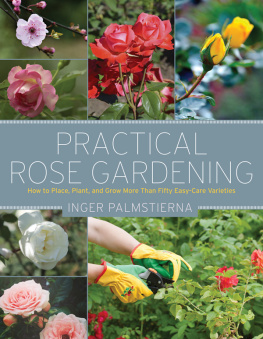American Meadows
Ideal seed source for natives and wildflowers geared to novices.
americanmeadows.com
Antique Rose Emporium
Route 5, Box 143
Brenham, TX 77833
antiqueroseemporium.com
Hundreds of heirloom rose varieties for warmweather climates.
Applewood Seed Co.
5380 Vivian Street
Arvada, CO 80002
applewoodseed.com
Premier bulk seed producer of wildflowers, grasses, etc.
Baker Creek Heirloom Seed Co.
2278 Baker Creek Road
Mansfield, MO 65704
The best color seed catalog, FREE.
rareseeds.com
Las Pilitas Nursery
3232 Las Pilitas Road
Santa Margarita, CA 93453
laspilitas.com
Excellent source of western native plants.
Monticello, The Thomas Jefferson Center for Historic Plants
P.O. Box 316
Charlottesville, VA 22902
monticello.org
Nonprofit organization offering historic flowers, vines, and vegetables.
Mountain States Wholesale Nursery
13803 W. Northern Ave.
Glendale, AZ 85307
mswn.com
Excellent source of natives for desert and mountain conditions.
Native Seeds/SEARCH
2509 North Campbell Avenue #325
Tucson, AZ 85719
nativeseeds.org
Source of seed cultivated by Native Americans in southwestern United States and Mexico.
Roses of Yesterday and Today
802 Browns Valley Road
Watsonville, CA 95076
rosesofyesterday.com
Nursery and mailorder source for many heirloom roses.
Seed Savers Exchange
3076 North Winn Road
Decorah, IA 52101
seedsavers.org
A nonprofit organization devoted to preserving heirloom seed for food crops. Acts as communication network linking members who buy and sell seed to one another. Theres also catalog seed sales online.
Austin, Mary. The Land of Little Rain. New York: Penguin, 1988.
Balls, Edward K. Early Uses of California Plants. Berkeley: University of California Press, 1962.
Barrott, S.A., and E.W. Gifford. Miwok Material Culture: Indian Life of the Yosemite Region. Yosemite, CA: Yosemite Association, 1908.
Barrows, David Prescott. Ethnobotany of the Cahuilla Indians. Banning, CA: Malki Museum Press, 1967. Reprint of a work published originally in 1900.
Bean, Lowell John, and Katherine Siwa Saubel. Temalpakh: Cahuilla Indian Knowledge and Usage of Plants. Banning, CA: Malki Museum Press, 1972.
Blackburn, Thomas C., and Kat Anderson, editors. Before the Wilderness: Environmental Management by Native Californians. Menlo Park, CA: Ballena Press, 1993.
Brewer, William H. Up and Down California: In 18601864. Berkeley: University of California Press, 1974.
Chestnut, V.K. Plants Used by the Indians of Mendocino County, California. Willits: Mendocino County Historical Society, 1974. This is a reprint of a work published in 1902. Reach the Mendocino County Historical Society at 603 West Perkins Street, Ukiah, CA 95482.
Coolidge, Dane. California Cowboys. Tucson: University of Arizona Press, 1967. A reprint of a 1939 book.
Dreyer, Peter. A Gardener Touched with Genius: The Life of Luther Burbank. Santa Rosa, CA: Luther Burbank Home and Gardens. Available from Luther Burbank Home and Gardens, P.O. Box 1678, Santa Rosa, CA 95402.
Kroeber, A.L. Handbook of the Indians of California. New York: Dover Publications, Inc., 1976. Reprint of a 1925 book.
Lewis, Donovan. Pioneers of California: True Stories of Early Settlers in the Golden State. San Francisco: Scottwall Associates, 1993.
MacPhail, Elizabeth C. Kate Sessions: Pioneer Horticulturist. San Diego: The San Diego Historical Society, 1976. Available from the San Diego Historical Society, P.O. Box 81825, San Diego, CA 92138.
Ortiz, Beverly. It Will Live Forever: Traditional Yosemite Indian Acorn Preparation. Berkeley, CA: Heyday Books, 1991.
Peattie, Donald Culross. A Natural History of Western Trees. Boston: Houghton Mifflin, 1953.
THERE IS NO STATE THAT CONTAINS GREATER CONTRASTS OF NATURAL environments than California. The dark, primeval redwood forests of the north differ starkly from the dry coastal scrub behind glittering white sands of the southern beaches. The tallest peak in the contiguous states, Mt. Whitney, lies in the rugged Sierra Nevada Mountains, Muirs range of light that stretches like a spine through much of the state. The fertile Sacramento and San Joaquin Valleys are the belly of California, encompassing hundreds of square miles of highly productive farmland fed by drainages of the Sierras western slopes. To the southeast lie our inland deserts, with Death Valley and its searing heat well below sea level. In contrast, the Mohave Desert, despite its incredibly hot summer temperatures, has supported entire cities by springs and underground rivers. California is a patchwork of widely differing climates, each supporting specific communities of native plant life. This natural diversity helped mold the picture of the Old West we know today, having influenced its development in so many ways.
Before the Spanish explorers first arrived, there was no separation between Mexico and Southern California, nor were there boundaries with Oregon, Nevada, and Arizona. This land remained undefined and untouched for millions of years except by the prehistoric peoples who migrated across the land bridge of the Bering Strait and filtered down to populate both American continents. Remains of some of Californias very first human residents, discovered in the La Brea Tar Pits of Los Angeles, are estimated to be 15,000 years old.
For thousands of years, tribal separation and isolation accentuated tribespecific characteristics. By the 1500s, when the Spanish first arrived, the tribes residing in what is now California were well defined. A.L. Kroebers famous work, Handbook of the Indians of California, sets the estimated population of Native Californians before the Spanish at about 130,000. However, scholars today contend the numbers were far higheras much as 300,000.
The California Native Americans were separated into dozens of tribes, each with a welldefined homeland. A tribal unit typically numbered about 1,000 people and occupied a relatively small tract of land compared to the vast territories of the desert southwest and Great Plains tribes. This was due to the abundance of food, both of plant and animal origin. There was little need to migrate long distances for food, but smaller scale relocation with the seasons was common.
California Indians were for the most part hunting and gathering tribes, depending on the bounty of native plants for much of their food. An exception were the Yumas, who did plant some crops in the rich silt along the flood plain of the Colorado River. California Indians were superb botanists, with intimate knowledge of every native plant as a source of food or other material goods.
The perpetual gathering often required digging for roots and bulbs in the soil. When Anglo explorers first witnessed this activity, they were quick to call all native California peoples Diggers, an unflattering name still resented by Native Americans today. After the feats of horsemanship exhibited by Great Plains tribes and the elaborate architecture of southwestern Pueblos, the simplicity of Native Californians was perceived as far more primitive and even backward. But in fact their culture was complex, and they were highly skilled in the utilization of plant materials.
During the 1500s, the Spanish, with their strong foothold in the New World, began to venture north from Mexico into California. The pueblos and presidios they founded were supplied by trading ships called Manila galleons, which crossed the Pacific from Spanish colonies in the Philippine Islands. In need of a port of call on the California coast, an anchorage at Monterey Bay was developed for ships to take on provisions after crossing the Pacific Ocean.







